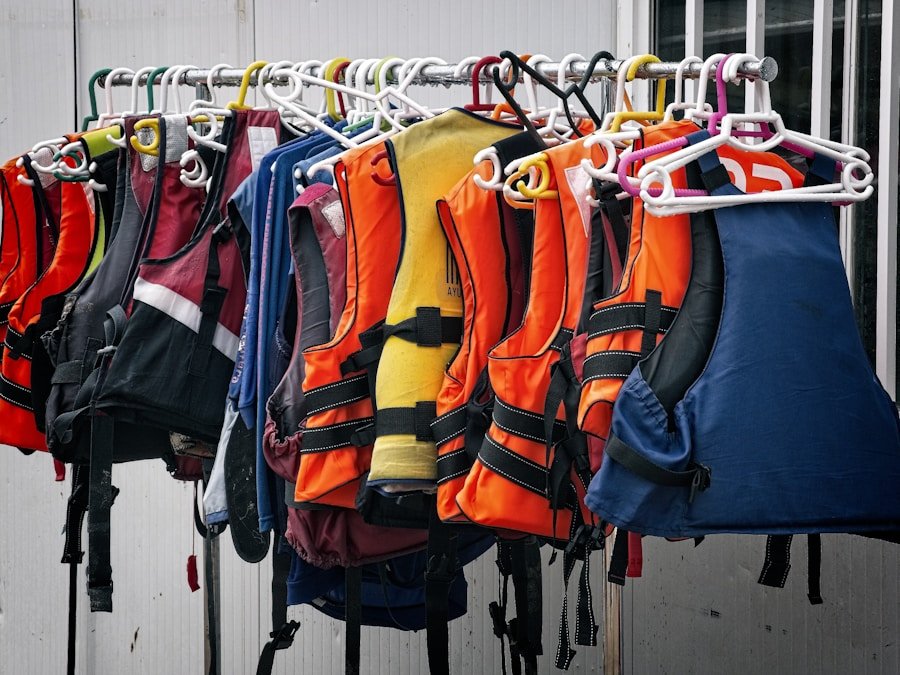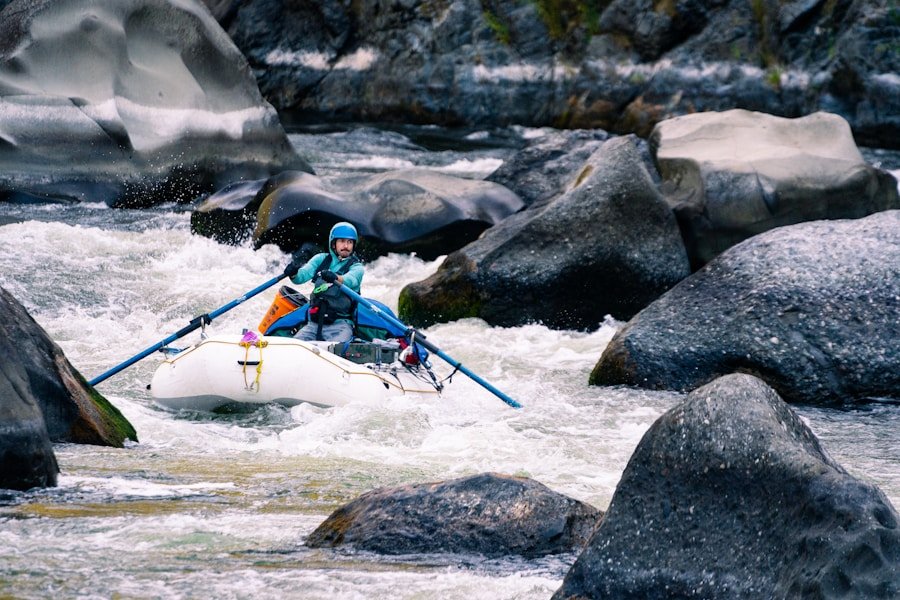Campfires are a cherished tradition among outdoor enthusiasts, providing warmth, light, and a social hub. However, it is crucial to recognize the potential hazards associated with campfires and adhere to essential guidelines to ensure a safe outdoor experience. A critical aspect of campfire safety is selecting a suitable location for the fire.
It is vital to choose a spot that is free from overhanging branches, dry grass, and other flammable materials. Additionally, clearing a perimeter around the fire pit is necessary to prevent the spread of flames. Another crucial aspect of campfire safety is constructing the fire itself.
Begin by creating a small pile of tinder, such as dry leaves, twigs, and small pieces of wood. Once the tinder is ignited, gradually add larger pieces of wood to build the fire. It is imperative to never leave a campfire unattended and to maintain close supervision at all times.
When it is time to extinguish the fire, use water to douse the flames, stirring the embers and adding more water until the ashes are cool to the touch. By understanding and adhering to these essential guidelines, outdoor enthusiasts can enjoy the warmth and beauty of a campfire while minimizing the risk of accidents or wildfires.
Key Takeaways
- Always keep a bucket of water or a fire extinguisher nearby when having a campfire
- Never leave a campfire unattended and always fully extinguish it before leaving
- Properly manage and maintain the campfire to prevent it from spreading and causing a wildfire
- Use designated fire pits and follow local regulations and restrictions for campfires
- Teach children about campfire safety and supervise them closely around the fire
The Importance of Proper Campfire Management: Tips for a Safe Outdoor Experience
Understanding Local Regulations
One of the most important aspects of campfire management is understanding the local regulations and restrictions regarding fires. Many areas have specific rules in place to prevent wildfires, such as bans on open fires during dry or windy conditions. It’s crucial to research and adhere to these regulations to avoid fines and protect the environment.
Choosing the Right Materials
In addition to following local regulations, it’s important to use the right materials when building and maintaining a campfire. Dry, seasoned wood is ideal for creating a clean-burning fire with minimal smoke. Green or wet wood can produce excessive smoke and pollutants, which can be harmful to both people and the environment.
Monitoring Wind Conditions
Properly managing a campfire also involves being mindful of wind conditions. A strong gust of wind can quickly spread embers and sparks, potentially igniting nearby vegetation. By positioning yourself and your fire pit in a sheltered area and monitoring wind conditions, you can minimize the risk of a wildfire starting from your campfire.
Preventing Wildfires: Responsible Campfire Practices for Outdoor Enthusiasts
Preventing wildfires is a shared responsibility among outdoor enthusiasts, and responsible campfire practices are essential for minimizing the risk of accidental fires. One of the most effective ways to prevent wildfires is to use designated fire pits and rings whenever possible. These designated areas are typically designed to contain fires and prevent them from spreading beyond their boundaries.
When using a designated fire pit, be sure to clear away any flammable materials from the surrounding area and never leave the fire unattended. Another important aspect of preventing wildfires is properly extinguishing your campfire. Even after dousing the flames with water, it’s crucial to carefully check for any remaining embers or hot spots.
Use a shovel or stick to stir the ashes and ensure that they are completely cool before leaving the site. Additionally, it’s important to be mindful of the weather conditions when planning a campfire. Avoid building fires during periods of high winds or drought, as these conditions can increase the risk of a fire spreading out of control.
By following responsible campfire practices, outdoor enthusiasts can do their part to prevent wildfires and protect natural landscapes for future generations.
Essential Gear and Tools for Safe Campfire Cooking and Enjoyment
| Important Tips for Outdoor Enthusiasts |
|---|
| 1. Keep a safe distance from the campfire |
| 2. Never leave the campfire unattended |
| 3. Use a designated fire ring or pit |
| 4. Keep a bucket of water or a hose nearby |
| 5. Fully extinguish the fire before leaving |
When it comes to enjoying a safe and successful campfire experience, having the right gear and tools is essential. One of the most important items for safe campfire cooking is a sturdy set of cooking utensils, such as long-handled tongs, spatulas, and skewers. These tools allow you to handle food over an open flame without risking burns or injuries.
Additionally, having a reliable heat-resistant glove can provide added protection when working with hot coals or flames. Another essential piece of gear for safe campfire cooking is a portable fire extinguisher or bucket of water. While it’s important to take precautions to prevent accidents, having a means of quickly extinguishing a fire in an emergency is crucial for ensuring everyone’s safety.
In addition to safety gear, it’s important to have a reliable heat source for cooking over a campfire. Portable grills or stoves designed for outdoor use can provide a stable and controlled cooking surface, reducing the risk of accidents or injuries.
Teaching Children Campfire Safety: Tips for Parents and Guardians
Teaching children about campfire safety is an important responsibility for parents and guardians who enjoy spending time outdoors with their families. One of the most effective ways to instill good safety habits in children is by leading by example. By demonstrating responsible campfire practices and emphasizing the importance of fire safety, parents can help children develop a healthy respect for fire and its potential dangers.
In addition to setting a good example, it’s important to involve children in the process of building and maintaining a campfire. By teaching children how to safely gather tinder and kindling, as well as how to properly extinguish a fire, parents can help them develop valuable outdoor skills while reinforcing important safety guidelines. It’s also crucial to establish clear rules and boundaries regarding campfire safety with children.
By setting expectations for behavior around fires and explaining the potential consequences of unsafe practices, parents can help children understand the importance of responsible campfire behavior.
Campfire Safety in Different Environments: Tips for Hiking, Camping, and Backpacking
Hiking in Remote Areas
When venturing into remote areas, it’s vital to be mindful of local regulations regarding fires. Whenever possible, use established fire pits to minimize the risk of wildfires and environmental damage. In some areas, fires may be prohibited altogether, so it’s essential to check with local authorities before building a campfire.
Camping in Established Campgrounds
Camping in established campgrounds often provides designated fire pits or rings for safe campfire use. However, it’s still crucial to follow responsible practices such as clearing away flammable materials from the surrounding area and properly extinguishing the fire before leaving the site.
Backpacking and Portable Stoves
Backpacking presents its own set of challenges when it comes to campfire safety. Due to restrictions on open fires in many backcountry areas, hikers often rely on portable stoves or other non-flame heat sources. By understanding and adhering to the specific guidelines for campfire safety in different environments, outdoor enthusiasts can enjoy their favorite activities while minimizing their impact on natural landscapes.
Emergency Preparedness: What to Do in Case of a Campfire Accident or Wildfire Outbreak
Despite taking all necessary precautions, accidents can still happen when enjoying outdoor activities involving campfires. In the event of a campfire accident or wildfire outbreak, it’s crucial for outdoor enthusiasts to be prepared to respond quickly and effectively. One of the most important aspects of emergency preparedness is having a plan in place before an emergency occurs.
This plan should include knowing how to contact emergency services in the area where you will be recreating and having a basic understanding of first aid techniques. In addition to having a plan in place, it’s important for outdoor enthusiasts to carry essential emergency supplies when spending time around campfires. A basic first aid kit, along with items such as water, food, and extra clothing, can provide valuable support in the event of an emergency situation.
It’s also important to stay informed about current fire conditions in the area where you will be recreating. By monitoring local weather forecasts and fire danger ratings, outdoor enthusiasts can make informed decisions about whether it’s safe to build a campfire or if additional precautions are necessary. In conclusion, campfires are an enjoyable and time-honored tradition for outdoor enthusiasts, but it’s important to prioritize safety when enjoying this activity.
By understanding essential guidelines for campfire safety, properly managing fires, preventing wildfires, using appropriate gear and tools, teaching children about fire safety, being mindful of different environments, and being prepared for emergencies, outdoor enthusiasts can enjoy their favorite activities while minimizing risks and protecting natural landscapes. With responsible practices and careful planning, everyone can safely enjoy the warmth and camaraderie that comes with gathering around a campfire in the great outdoors.
FAQs
What are some important tips for staying safe around a campfire?
– Always keep a bucket of water or a fire extinguisher nearby. – Clear the area around the campfire of any flammable materials. – Never leave a campfire unattended. – Completely extinguish the campfire before leaving the area.
Why is it important to stay safe around a campfire?
Campfires can pose a serious risk of starting wildfires if not properly managed. Additionally, improper handling of campfires can lead to burns and other injuries.
What should I do if I encounter an unattended campfire in the wilderness?
If you come across an unattended campfire, it is important to extinguish it completely if possible. If you are unable to do so, report it to the appropriate authorities.
Are there any specific rules or regulations regarding campfires in certain areas?
Many national and state parks have specific rules and regulations regarding campfires, including designated fire pits and restrictions on when and where campfires are allowed. It is important to familiarize yourself with these rules before starting a campfire.
What are some alternative ways to enjoy a campfire experience without the risk of starting a wildfire?
Consider using a portable propane fire pit or a camping stove to create a campfire-like atmosphere without the risk of starting a wildfire. Always follow the manufacturer’s instructions and safety guidelines when using these alternatives.













